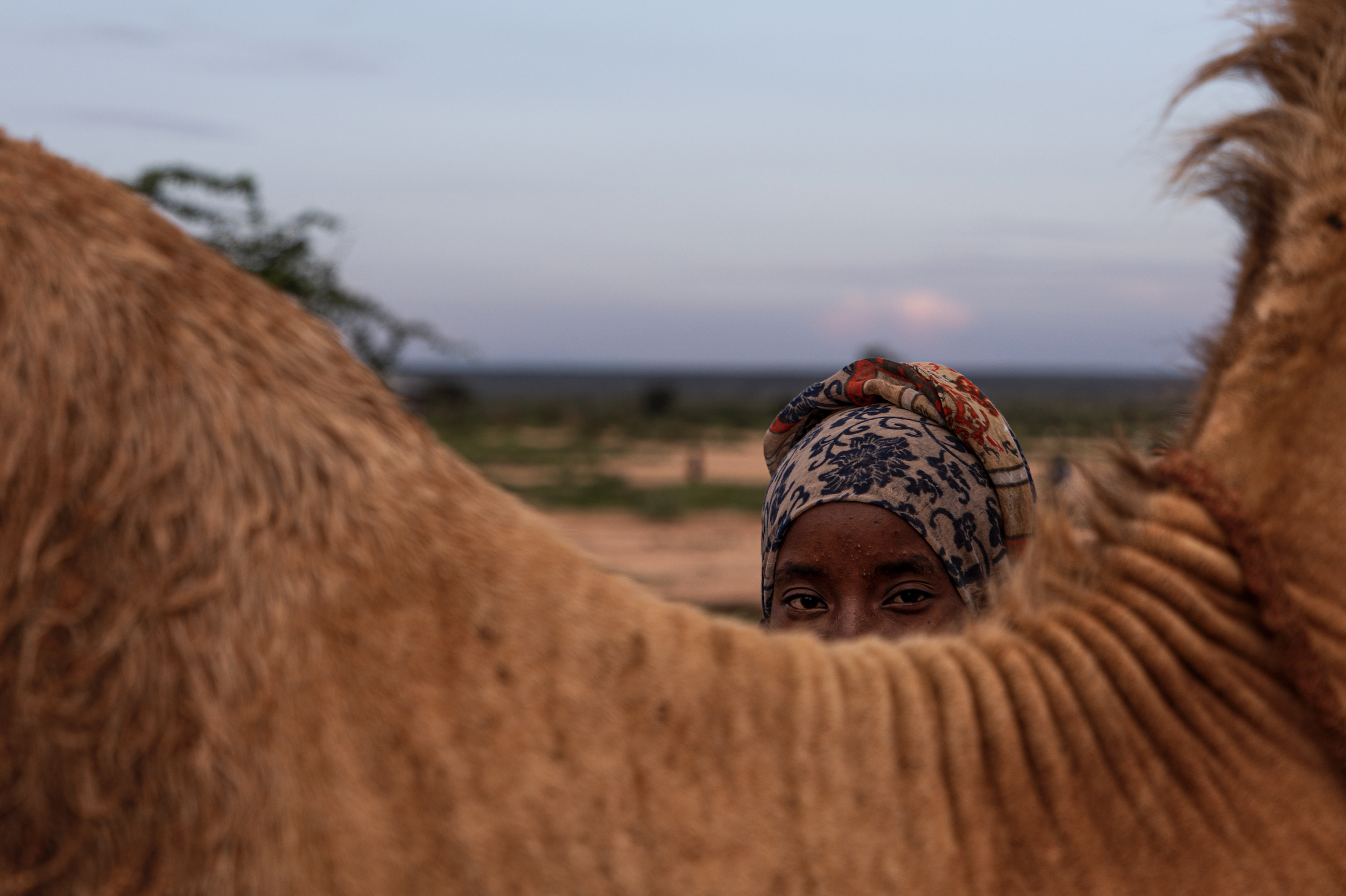
Sixteen-year-old Tracy went second. She watched her aunt kneel, bracing her knees against a sitting girl’s back and clutching the girl’s arms in a vice-like grip. Two other women positioned themselves on either side of the girl, holding her legs open as if she sat in stirrups at a gynecologist’s office.
The female circumciser, an older woman whom Tracy recognized as a member of a neighboring community of the Rendille tribe of northern Kenya, approached the space between the girl’s legs with a newly purchased razor blade in hand. Tracy watched as she made three quick cuts on her clitoris: first up the center, then down each side.
It was Tracy’s turn next.
“When you’re being cut, your back is in pain. It’s very painful. Your stomach aches. I’ve never felt that kind of pain in my life,” Tracy, whose name has been changed to protect her privacy, told VICE World News during an interview at her village in Marsabit, a county in northern Kenya.
After the "cut," women applied dried and crushed tea leaves, which stuck to Tracy’s wound and created a clot. By 11:00 a.m., Tracy and the other girls were taken into the forest. “They go to [the forest] to check if they have left anything,” she said. “They remove the tea leaves again, and you start bleeding again, and they check you.” Any girl who has flesh remaining must be cut a second time. Luckily, Tracy said, she did not.
Tracy believes she and the other girl were cut because being home from school due to the coronavirus pandemic made them vulnerable to undergoing this practice. “Because we’ve stayed at home for long, so the parents just decided they would just circumcise us,” she explained, tossing the end of her loose head wrap over her slender shoulder. “Because the schools are closed, and there’s nowhere we’re going, and we don’t have work. So, they just decided to circumcise us.”
Since the novel coronavirus arrived in Kenya in mid-March, Kenya’s government has registered nearly 100,000 cases and more than 1,600 deaths. The pandemic has taken a toll on the country’s economy, and many families are struggling to survive. As is the case around the world, COVID-19 has had a particularly devastating impact on women and girls. Domestic violence is on the upswing, teenage pregnancy rates are rising, early child marriage is increasing, and now, the ripple effects of the pandemic are causing a resurgence in female circumcision.
Widely termed female genital mutilation, or FGM, by international feminists and human rights groups, but called female genital cutting, or FGC, by those hoping to reduce stigma and judgement, the practice involves cutting part or all of the female genitalia for non-medical reasons and is predominantly performed on children and adolescent girls between infancy and 15 years old.
FGC has been classified into different categories, depending on the severity of the procedure. Type 1 could be a tiny nick of the clitoral skin, while Type 3, also known as infibulation, can involve extensive cutting and narrowing of the vaginal opening by stitching it together to create a seal.
The exact number of girls and women worldwide who have undergone FGC remains unknown, but the United Nations Children’s Fund (UNICEF) estimates that at least 200 million individuals alive today have been cut in 31 countries across the world. UNICEF data show that the practice is nearly universal in some countries, while it affects only a small fraction of girls in others.
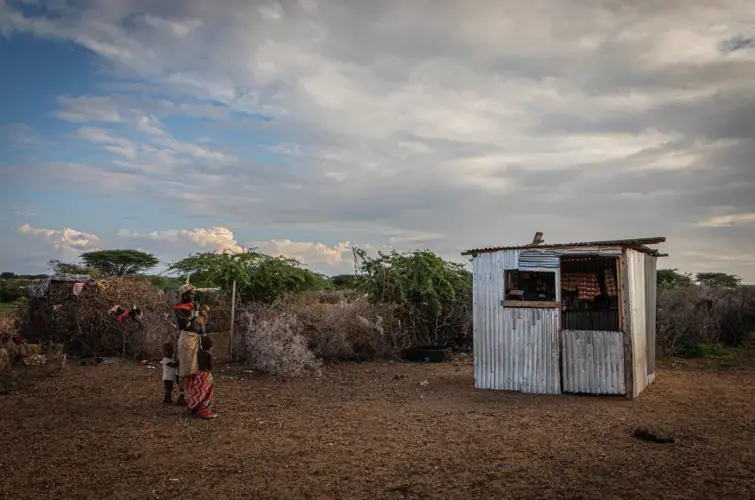
FGC is conducted in communities across Africa, the Middle East, and parts of Asia for a number of different cultural and economic reasons. Unlike male circumcision, which has been shown to help reduce transmission rates of HIV and other STI infections, female circumcision has no proven medical benefits. On the contrary, it can be life threatening. According to the World Health Organization (WHO), the immediate complications of FGC can include excessive bleeding, swelling, fever, infection, urinary problems, shock, and death, and the long-term complications can range from menstrual problems, sexual challenges, and psychological issues to an increased risk of childbirth complications, including fistula and even newborn death. It is, simultaneously, a crucial coming-of-age ceremony and a prerequisite for marriage in societies like Tracy’s, and some women and girls choose to be cut willingly, making it a complex issue to address on a global scale.
FGC has been classified as a violation against the rights of women and girls by the United Nations and other international bodies, and Kenya’s president, Uhuru Kenyatta, has pledged to eradicate FGC by the year 2022, eight years ahead of the global target set by the United Nations. Most experts and activists agree that next year will come and go without this ambitious goal being reached. The country banned FGC in 2001 through the Children’s Act, which stated “no person shall subject a child to female circumcision, early marriage or other cultural rites, customs or traditional practices that are likely to negatively affect the child’s life, health, social welfare, dignity or physical or psychological development.” In 2011, Kenya passed more explicit legislation, the Prohibition of Female Genital Mutilation Act, which imposed harsh penalties on perpetrators of FGC, including a minimum fine of 200,000 KSH (approximately $1,800) or three years imprisonment or both. It also established a national “Anti-Female Genital Mutilation Board,” a semi-autonomous government agency, and an “Anti-Female Genital Mutilation and Child Marriage Prosecution Unit,” a special division within the Directorate of Public Prosecution that has 20 prosecutors based in FGC-practicing communities around the country to deal exclusively with eradicating the practice. Although some anti-FGC experts say the government must do more to end the practice, its efforts to-date appear to be making some difference: The prevalence of FGC in Kenyan women aged 15-49 years has declined from 38 percent in 1998 to 27 percent in 2008 to 21 percent in 2014, the most recent year for which comprehensive national data is available.
But COVID-19 is reversing this trend, and hit Kenya amid already challenging circumstances, making the fight against FGC that much more difficult for those trying to end the practice. Pandemic-related travel restrictions have prevented government officials, law enforcement, and humanitarian workers from traveling in regions with high FGC prevalence to implement child protection programs. The all-consuming task of ensuring mask-wearing, hand-washing and widespread testing has, instead, diverted government and law enforcement resources.
“The plan was in place. The stakeholders were being engaged. Then COVID hits,” Ademola Olajide, Kenya’s country representative for the United Nations Population Fund (UNFPA), told VICE World News. “The Ministry of Health has had to rightfully redeploy as much of the resources that they could muster to control the pandemic. Therefore, it meant that things like strengthening the health system, responding to FGM, had to take a backseat for a while.”
In March 2020, the country shut down. Lockdowns between counties were instituted. A curfew was put into place. Money began to dry up. And as this occurred, many of the government and humanitarian agency efforts to end FGC became either impossible to carry out or severely limited.
The efforts postponed were creative: A program that UNFPA had just launched pre-COVID-19 involved educating Kenya’s ubiquitous boda boda (motorcycle taxi) drivers about FGC so they could help identify and report potential cases across the country. UNFPA had already begun training groups of riders when COVID-19 hit, halting the program.
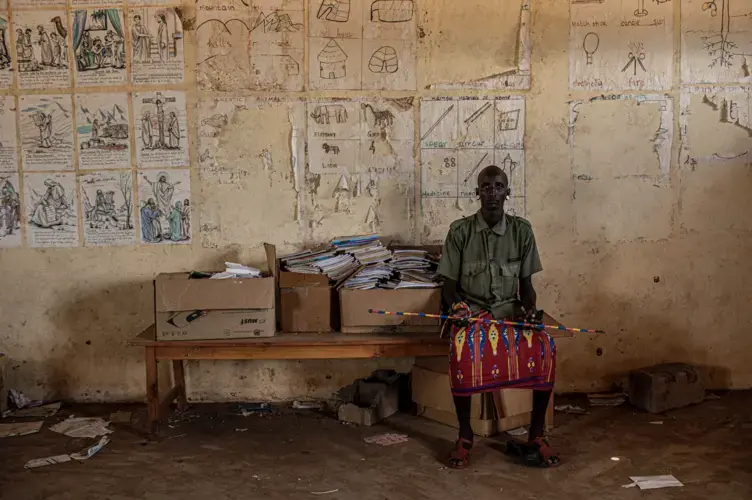
Schools have also historically been a source of protection for school-aged girls at risk of FGC. Girls are normally cut during the school holidays, which allows them time to heal from the procedure without scrutiny from teachers or school administrators. With schools closed since March 2020 due to the pandemic, Kenyan girls like Tracy have been at home for months. “During school days, the [parents] know that the lessons are going on, and the students will lose [out if they are cut]. So, they don't do it at that time,” said Francisca Khaboso, the principal of a high school in Marsabit County where most students are Rendille and come from low-income pastoralist families. “But during holiday, they feel that the girls are free. They also have that good time to heal. That is why they bleed during the holiday.”
The Kenyan government has cautiously re-opened schools like Marsabit’s Mercy Primary School to ensure that students do not fall too far behind. In the scorching heat of the dirt school yard, clusters of 13- and 14-year-old boys and girls gathered in groups, chatting animatedly during recess.
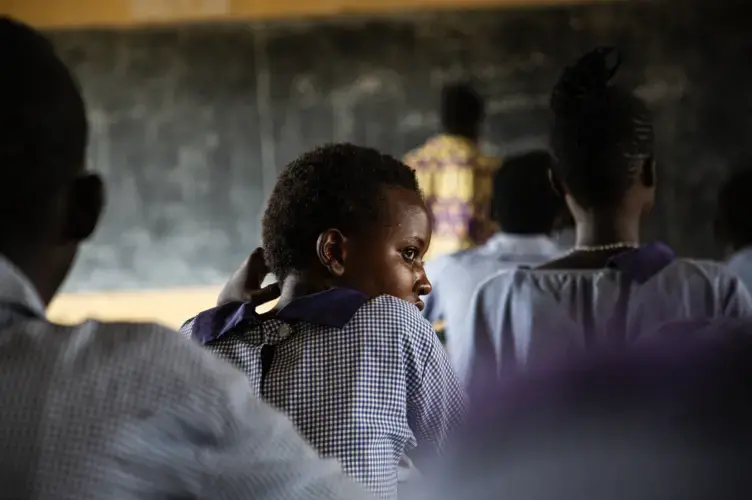
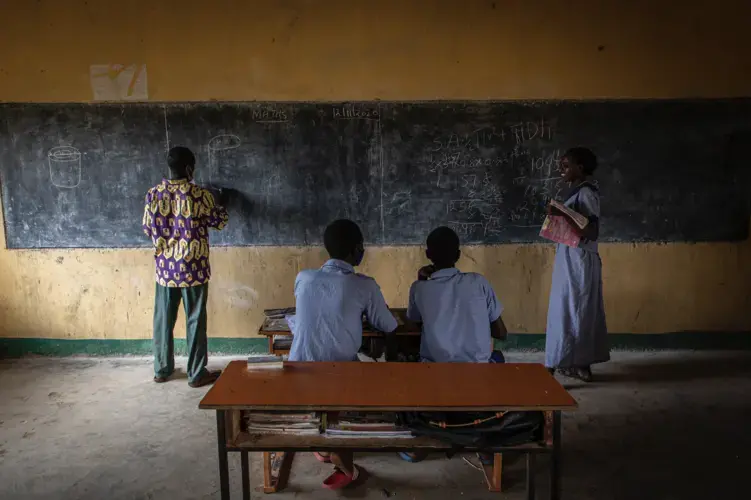
Edward Lekapana, who had been teaching for nearly 21 years at the school, told VICE World News what happens to his female students after they have been cut: “Some come back. They don’t concentrate the way they were concentrating before. There are some who are married off. Those who are do not return to school after they're married,” he said. “Maybe now, during this [COVID-19] holiday, many may not come back.”
This all results, experts say, in a spike in FGC cases. Data gathered by UNICEF in nine Kenyan counties, including Marsabit, where Tracy lives, shows a 121 percent increase in the number of FGC cases between January and November 2020 compared to the same period in 2019, which the organization attributes largely to COVID-19. In that same timeframe, the number of girls rescued from FGC dropped from 1,073 in 2019 to 994 in 2020.
In Kenya, a diverse nation containing a multitude of religions, tribal groups, and customs, FGC prevalence varies by region. While Kenya’s national average is 21 percent, FGC rates are as high as 98 percent in the northeast of the country and less than one percent in the west of the country. In Laisamis sub county, where Tracy lives, FGC prevalence hovers around 78 percent, and amongst her tribe, the Rendille, prevalence is similar, according to UNICEF data.
The costs of treating the health impacts of FGC also places great strain on government healthcare systems. A 2020 WHO study found that the total costs of treating all the medical needs resulting from FGC amount to USD $1.4 billion globally per year. For individual countries, these costs could comprise up to 10 percent of their entire annual average spending on healthcare, and for some, this figure could be as high as 30 percent. If the practice were abandoned now, the WHO found that the associated savings in health costs would be more than 60 percent by 2050. By contrast, if no action is taken to end FGC, these costs will increase by 50 percent in the same time period, amplified by population growth.
Eighteen-year-old Vicky, another girl from Laisamis, suffered some of the negative side effects from FGC when she was cut as a small child more than 10 years ago. Vicky said she was woken up one morning and told by her mother that there was “work to be done.” Without knowing what it was for, she was then sent to buy the razor blade that the circumciser would use to cut her.
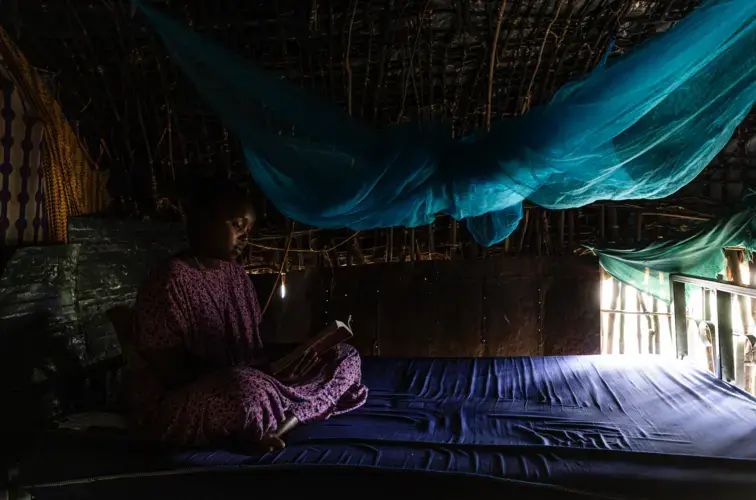
Vicky said she never wanted to be cut, but as a child, she had no choice. After experiencing the first cut, “the old woman came back to ask how I was doing. She was told I was still bleeding a lot,” she remembered. The circumciser then took Vicky to the forest. “But they saw they hadn’t cut the whole thing,” said Vicky, whose name has been changed to protect her privacy. “She cut it the second, third, even fourth time. It was so painful, I kept crying throughout, asking why this was happening to me.” The circumciser charged Vicky’s family twice: 1000KSH, or around $9, for the first cut, and the same amount for the second. After her circumcision, Vicky experienced excessive bleeding for several weeks. She had to stay home from school, and she couldn’t urinate.
“I just ran away to avoid seeing her being circumcised because it is a painful process. She started vomiting and bleeding a lot. After that, she felt weak,” her mother, who agreed to speak anonymously, told VICE World News. Vicky’s mother explained that as her daughter’s school performance dropped and her personality changed, she worried for her future.
Vicky’s mother had herself been cut the day she was married. “I just felt a lot of pain. I was too young. I lost a lot of blood. I fainted,” she said. But still, she felt obligated to circumcise her daughter. “This was culture that was there before,” she said. “This is what we believed was right. Someone who is circumcised is a proud girl.”
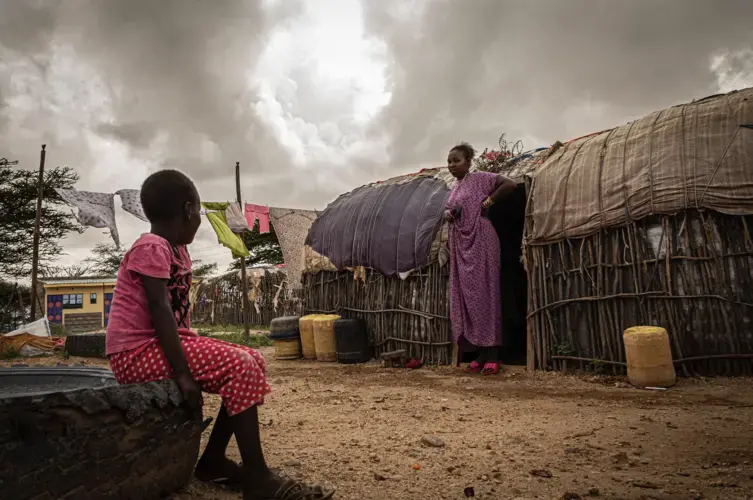
As Vicky’s mother explained, cutting is a deeply entrenched, highly celebrated cultural tradition that in many societies marks the transition from girlhood into womanhood. The removal of the clitoris and other female sexual organs is also believed by some to curb a girl’s sexuality and prevent excessive sexual desire. And FGC can be performed for cosmetic reasons, as some men prefer the physical aesthetic of a woman who has been circumcised to one whose reproductive organs are intact and who may be viewed as “unclean.” In some cases, socioeconomic factors also play a role: As a prerequisite for marriage in many cultures, FGC is often the first step in a family’s receiving a marriage dowry that can help to alleviate economic hardship. And religious doctrine is also used to justify the practice, although many religious scholars and international organizations maintain that FGC is endorsed by neither Christianity nor Islam. (In fact, historical writings and research indicate that the practice predates both religions; female circumcision was identified in an Egyptian female mummy dating back to around 500 B.C.)
“There are some Muslim communities who genuinely believe that FGM is an Islamic practice because it ‘purifies’ and protects the girl during adolescence and before marriage,” Reyhana Patel, head of communications at Islamic Relief Canada, wrote in a 2019 Thomson Reuters Foundation opinion piece. “It's appalling that this is exactly the kind of ignorance and injustice that Islam instructs Muslims to fight against in society—and yet many Muslims still stubbornly uphold the practice...The Qur’an, for example, makes absolutely no mention about FGM, and the few statements falsely attributed to Prophet Muhammad supposedly okaying FGM were declared unreliable centuries ago.”
In recent years, campaigns by governments, nongovernmental organizations and human rights activists have gradually had an effect on how communities perceive FGC. According to Kenya’s 2014 Demographic and Health Survey, approximately 92 percent of women and 88 percent of men aged 15-49 believe FGC should be stopped.
But eliminating deeply entrenched cultural practices does not happen overnight.
In Marsabit County, a group of three morans, community-described warriors who protect the Rendille people and guard their culture, told VICE World News that they would neither marry uncut women, nor allow their daughters to opt out of the practice. “She [my daughter] should explain why and give some reasons for this,” one man said. “And if she insists, she will no longer be mine.”
This is the cultural context that numbers of Kenyan women and girls are fighting against. Even if they do not want to undergo the cut, many will in order to uphold tradition, please their families and secure good marriages. In Marsabit, other girls said that they wanted to be circumcised to appeal to their prospective partners. One 18-year-old girl’s well-to-do Catholic parents did not want her to undergo FGC; but she was dating a handsome Rendille man, two years older, who had told her that he would never marry an uncut woman. So, the girl insisted that her parents allow the practice, threatening suicide if they did not agree.
On a sunny morning in Tracy’s village, a group of male elders, between 70 and 90 years old, squatted in age-defying positions beneath the shade of a tree as they chewed tobacco and discussed community news. The topic of FGC came up, and the elders said that they had heard from government and aid workers about the detriments of FGC. “We listened with open ears,” they told VICE World News. They had gathered, along with elders from Rendille communities across northern Kenya, to discuss possible alternative rites of passage that could serve as substitutes for FGC. But the risk of replacing a tried-and-tested tradition with an unknown was too great, they decided.
“A long time ago, we stayed with uncut women,” one said. “Things went wrong. People were not growing properly. An uncut girl brings death. Her child may be born, but her husband will die.” Better that one girl dies, they told me, than to bring death on the entire community.
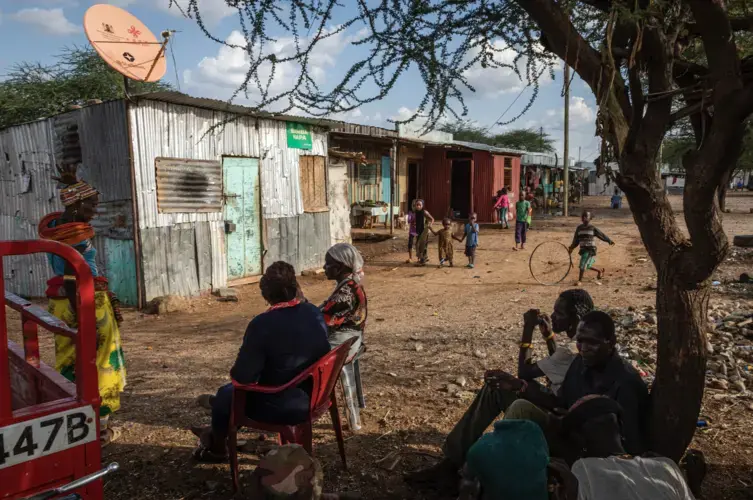
These superstitions, true or not, are passed down from generation to generation, and they indicate a certain way of life and belief system. The interference of government officials from far-off Nairobi, and aid workers from even further away in Europe and America, are distant and foreign compared to deeply rooted customs that permeate the everyday lives of the people and tribes that practice FGC.
“By 2020, the way at least some people are defining Rendille ethnic identity is that this is a core practice. Like you cannot be Rendille without this,” said Lynn Thomas, a professor at the University of Washington and an expert in Kenyan FGC history and gender studies. “It seems that it’s become a core part of the ethnic identity.”
Beyond the cultures and customs, FGC is also still performed because of the financial incentives behind the practice. In Kenya, it’s mainly performed by traditional circumcisers, usually local women from nearby villages who make a living from cutting.
One Rendille circumciser, Christine Lemowonapi, quit the practice years prior. Circumcision had long been a family business, and she had learned the trade from her mother, who had learned it from her mother before her.
Lemowonapi, an older woman whose tiny frame was weighed down by strings of colorful glass beads, said she considered herself a trained professional who took pride in her tried and tested technique; “circumcision is a practice that is done so you just cut a girl in [a specific] style to avoid too much bleeding,” she told VICE World News. “While cutting, you have to be sharp. For circumcision I was always available so anytime there were girls to be cut people said, ‘go and call that lady who does not cut so deeply.’”
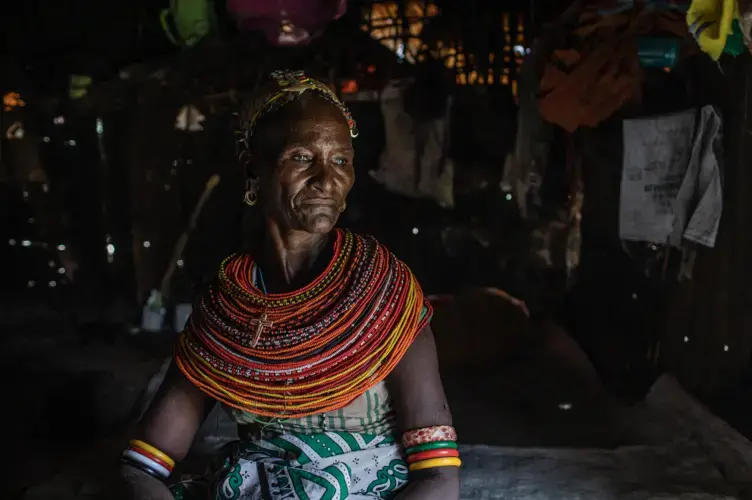
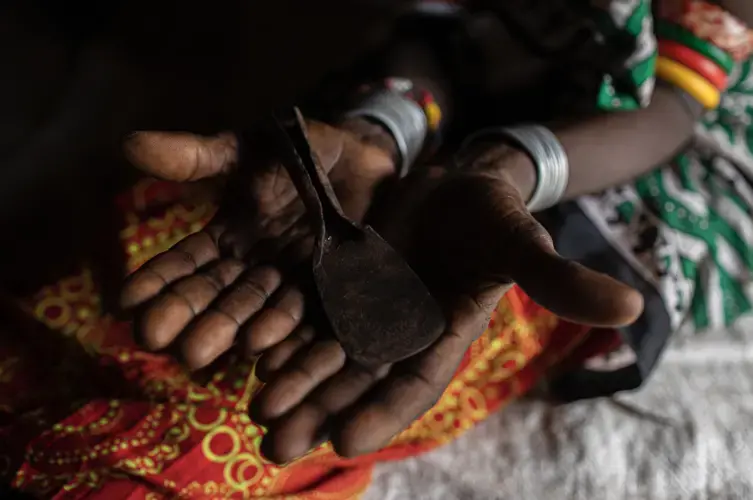
When the government banned FGC, Lemowonapi stopped practicing. Her income dried up, along with community respect. Now, she lives hand-to-mouth, reliant on the generosity of her daughter-in-law, which she claims is far from bountiful. But she refuses to go back to cutting because she fears the consequences. “Anytime I get a problem I ask myself, ‘now all this food that I [lost], why don’t I go back and still circumcise these girls?’ But someone told us when you are caught doing this your hand will be chopped [off] so I said, ‘better I leave that work and stay safe.’”
The problem for Lemowonapi, and so many women like her, is that she doesn’t have an alternative source of income. She now sells small broomsticks made of twigs to the local community, but the income is nothing compared to what she used to make. With no education or marketable skills, she says she needs someone to teach her a new trade that can replace her old one. And she needs money.
Some studies have questioned whether the increasing "medicalization" of FGC, where healthcare professionals perform the cut in homes, hospitals or makeshift clinics during school holidays, could actually serve as a reasonable harm-reduction technique. The debate around whether "medicalization" could actually save more lives than an outright ban on the practice, which could end up pushing FGC further and further underground and lead to more deaths because people fear taking life-threatening cases to the hospital, is an important one being discussed and debated by doctors, public health experts and medical ethicists. Other experts, however, have expressed concern over the increased "medicalization" of FGC, as this type of cutting is also rooted in economic benefits for the health workers who agree to perform it. Data from Kenya’s most recent Demographic and Health Survey shows that nearly 15 percent of women aged 15-49 and 20 percent of girls aged 0-14 were cut by a medical professional, usually a nurse or midwife, though some have claimed that medicalized FGC rates in Kenya are as high as 41 percent.
“Now you have the cutters, those who cut,” Olajide told VICE World News. “Some of them have actually abandoned the practice and taken on alternative trades but then these trades have been negatively impacted by COVID and climate change, and so they have resorted to their old trade. You have the criminal elements, and I'll say that quite boldly, within the health fraternity who also cut within health facilities for a fee.”
Olajide said that UNFPA is working with the Office of the President of Kenya to try to provide alternative sources of income, such as beadmaking, for former cutters. But, according to Christine and other reformed circumcisers, the programs are not reaching them. This is, in part, due to COVID-19, which has tightened budgets and made it extremely difficult for aid workers to continue implementing programs and services because of movement restrictions.
Another reason that FGC persists, Olajide said, is that its illegal status, and increasing opposition to the practice, has driven it underground. “It’s more like a drug trade. It’s not in the open,” Olajide explained. “Because if you interview every health worker, they'll tell you they don't do it. But then those who need to get it know exactly what people to speak to.”
This culture of secrecy makes it difficult for police officers and local officials to be able to identify, arrest and prosecute those performing and practicing it.
“One of our major challenges is most cases are not reported to us,” said Mbatian Kantai, the Sub County Police Commander of Marsabit South. “The communities seem closed up. They still value that culture. Because it’s part of the community's culture, anyone who [works] to advocate against FGM is somehow isolated.” Even so, Kantai said the police have had some success in arresting individuals performing circumcision. “We have arrested the circumcisers, mostly they’re women,” he explained. “We have taken them to court, and they have been punished.”
But Augustine Super, a government appointed chief for the area, said the cases being prosecuted are still too few. He pointed to corruption amongst police officers and politicians as a key reason why many cases do not result in convictions, a complaint echoed by others during this report. “Once we prosecute some cases, they're being interfered politically,” Super said. “As we arrest people, some people are interfering with the cases in the police line. There's some corruption which is going on, which is not allowed.”
Kantai disagreed: “So far, I've not received any complaint against police on corruption. And I, being the police chief, I totally discourage [this]. I think the best people to ask if the police are corrupt is our consumers, our customers. They’ll be able to tell you.”
“Maybe we have one or two other cases ... that the police were compromised,” he later added.
With all of these competing interests, eliminating the cutting practice is not a straightforward issue. Many people, including a number of African women, argue in favor of the practice for a variety of medical, feminist, societal and cultural reasons.
Wairimũ Ngarũiya Njambi is a Kenyan professor and researcher whose 2008 dissertation, Colonizing Bodies: A Feminist Science Studies Critique of Anti-FGM Discourse, breaks down and exposes the hypocrisy often found in “Western feminist” arguments against female circumcision.
“The colonial images that infuse the West’s understandings of the practices of female circumcision in general, as well as the anti-FGM discourse itself, are not new. Some date back to the earlier white, male travelers and explorers who reported such practices in their travel monographs and diaries,” Njambi wrote. “Later, these images would also come to be articulated in the very language of colonialism and imperialism as one of the reasons why Africa needed to be colonized.”
Njambi, whose dissertation relays her personal fight to choose to be circumcised, initially against her parents’ wishes, presents a different view of the practice to readers, one that is often entirely omitted in current writings and analysis about FGC. “My sadness over my father’s refusal to grant me permission to get circumcised was too much to bear,” she wrote. “And I was now more than ever determined to find out exactly what that experience would be like, and no one was going to stand in my way—not even my Christian parents.”
Njambi also critiqued the popular writing of American author Alice Walker, whose novel, Possessing the Secret of Joy, a story about a young African woman named Tashi who is voluntarily circumcised and then spends the rest of her life battling madness and trying to recover from the trauma, garnered widespread acclaim and brought global attention to the issue of FGC.
“While Tashi voluntarily submitted to circumcision, she learned only later, through her contact with the West’s objective eye, that her loyalty to custom was 'misguided;' the customary justifications for circumcision, rooted in 'myth,' kept her ignorant of the 'truth' of the tortuous physical and psychological implications of the practices,” wrote Njambi. “The traumas of 'tradition,' of indigenous knowledge, are corrected by none other than the 92 icons of Western psychological science. In this sense, Tashi appears as rescued, psychologically, by the West and its capacity to reveal universal truths as antidotes to local myths.”
Fuambai Sia Ahmadu, a medical and symbolic anthropologist who founded SiA Inc., a movement dedicated to empowering circumcised women and girls in Africa and worldwide, and who also chose to be circumcised as an adult, disagrees that all circumcised women experience sexual dysfunction.
“Orgasms experienced during vaginal intercourse, these female elders say, must be taught and trained,” Ahmadu wrote in Anthropology Today, published by the University of Chicago. “Thus, from the viewpoint of these women elders vaginal intercourse is associated with womanhood and adult female sexuality. In Mande cultures the emphasis is on the vagina as the source and symbol of womanhood or—to refer to Alice Walker’s popular anti-FGM novel—the hidden g-spot, rather than the visible protruding clitoris, is the ‘secret’ ‘joy’ adult women ‘possess.’”
Ahmadu’s implied definition of sexual pleasure goes far beyond the limited scope of a clitoral orgasm, which has become the narrowly portrayed “end goal” of sexual pleasure for women, a phenomenon that can be viewed both by the explosion of vibrators on the sex-toy scene as well as from any Hollywood movie or TV show.
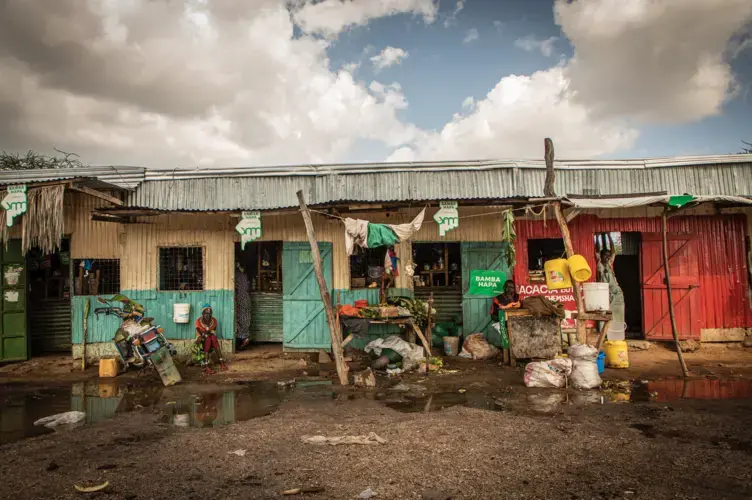
And in 2018, Tatu Kamau, a Kenyan doctor who has worked for the country’s Ministry of Health, made international headlines for arguing in favor of overturning the 2011 Prohibition of Female Genital Mutilation Act and legalizing FGC in a Kenyan court. Her argument was that banning FGC penalizes women for observing their culture and ranks certain cultures and their practices superior to others. Kamau was slammed by activists, feminists and the press for her position on the issue.
But to paint the entire anti-FGC movement as neo-colonial or Western-influenced would be a grave mistake, said Thomas, given how hard many African women are working, and have worked, to end the practice.
“I think the problem with using the term neo-colonial to talk about stuff today is that it just erases the fact that Kenya has been a post-colonial country for decades, and that there have been really complex and really interesting and important politics of those 50 or 60 years that shape the way things are today,” said Thomas. “There are all these decisions that Kenyans have made, and Kenyan activists have made ... that matter. And to reduce all those actions of Kenyans who have opposed the practice to neo-colonialism, I think, is really simplifying.”
On a rocky, dry stretch of land in Laisamis town, the sun had begun to set as 15 girls congregated on the soccer pitch from different directions. Some were already dressed in uniform, others had to hide behind nearby bushes to change out of their hijabs and long, dira dresses.
They took their positions barefoot and their coach, Dorcas Choya, a young, round-faced woman with a mischievous smile, kicked a nearly flat, beat up soccer ball into the air. The girls started running. For the next thirty minutes, they gave it everything they had, sprinting up and down the field, laughing, tackling each other.
Susie, one of the players whose name has been changed to protect her privacy, dominated on the field. But during an interview later, she revealed that she had run away from home earlier this year, after her uncle and mother tried to have her circumcised.
Susie had been sent for a sleepover to her cousin’s house. In the morning, she recognized the woman approaching the front door as a local circumciser. “When I saw her, I just ran,” said Susie. “I didn’t bother taking anything. I ran without shoes.” Susie fled to her coach Choya’s home, knowing she was a local anti-FGC activist. Choya became an advocate at the age of 13 after watching her neighbor’s circumcision. “She was bleeding a lot,” said Choya, who watched her friend go to the hospital because of the procedure. “She’s my close friend. So, from that moment, I didn't want to see any girl going through that thing.”
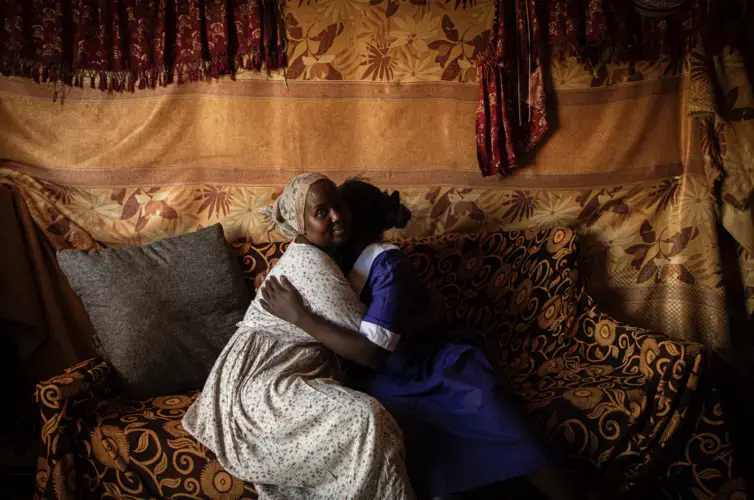
Because there is no “safe house” for girls running away from child marriage or FGC in this region, Choya has become a de-facto rescuer. Despite living in tough circumstances, in a small two-bedroom metal house with few comforts or amenities, Choya allows vulnerable girls to live with her family in makeshift tents on her property. She has hosted 33 girls so far, with 30 returning to their families when it was safe to do so.
“I knocked on [her] door,” Susie told me. “[Choya] asked who it was. I told her it was Susie. I told her to open up. I wanted to tell her a story ... She told me to stay with her until the day my parents will accept me and allow me to go back home.”
It has been months now, and although Susie visits her mother from time to time, she is still not welcome at home. She says she misses her family and desperately wants to return to her family.
But she has an advocate in her corner. Choya works relentlessly, often at great risk and under threat, for the young women of her community. “I’m not afraid because I stand by law,” she said. “I'm not afraid. I stand for the right.”
Choya keeps the girls busy after school by teaching them soccer, one of her personal passions.
“I love playing,” said Susie during an impromptu halftime. “I feel fresh.”
As the sun set on the soccer pitch, a group of young men boasting a brand-new soccer ball began edging into the space. They wanted to play on half the field even though Choya had booked it for her girls that evening. Choya released a string of expletives, ultimately throwing stones at the young men who towered above her tiny frame, until they surrendered and trudged off the field. The girls finished their game.
Rose Ngoilelo Orguba contributed reporting for this story.
COVID-19 Update: The connection between local and global issues–the Pulitzer Center's long standing mantra–has, sadly, never been more evident. We are uniquely positioned to serve the journalists, news media organizations, schools, and universities we partner with by continuing to advance our core mission: enabling great journalism and education about underreported and systemic issues that resonate now–and continue to have relevance in times ahead. We believe that this is a moment for decisive action. Learn more about the steps we are taking.









